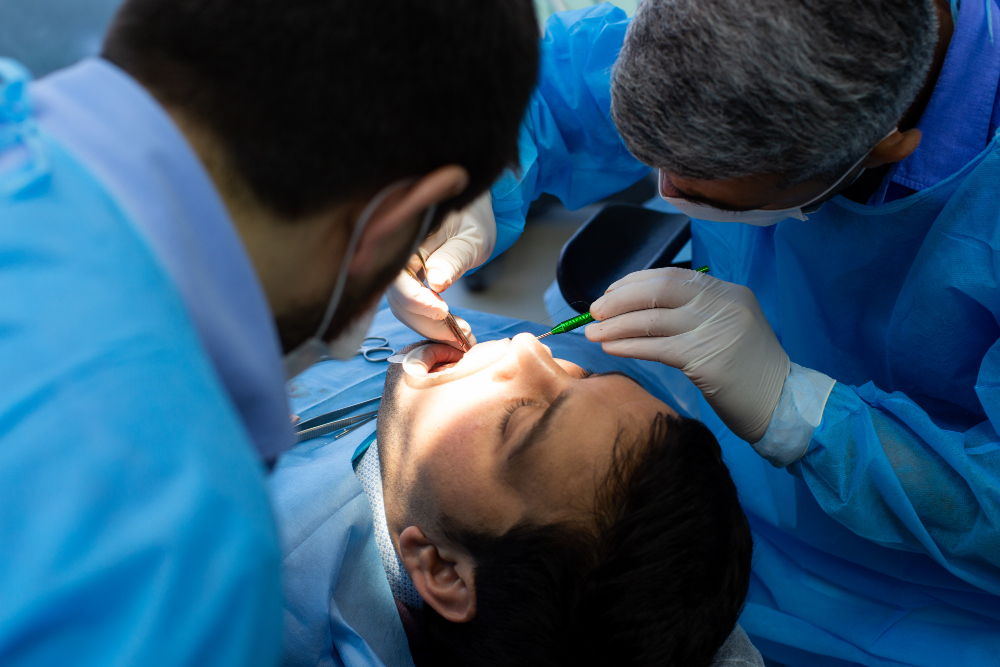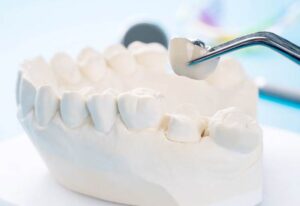What Is Wisdom Tooth Extraction?
Wisdom tooth extraction is a dental procedure to remove one or more wisdom teeth. These teeth are the last molars at the back of your mouth. Usually, they appear between ages 17 and 25. Sometimes, wisdom teeth do not have enough space to grow. As a result, they can cause pain or other dental problems. In these cases, your dentist may suggest wisdom tooth extraction. This process helps prevent future issues and keeps your mouth healthy.
Why Is Wisdom Tooth Extraction Needed?
Often, wisdom teeth do not grow in the right way. They may come in at an angle or stay trapped under the gum. Because of this, they can cause several problems, such as:Pain or swelling in the back of your mouthInfection or gum diseaseDamage to nearby teethTooth decay in hard-to-clean areasCrowding of other teeth
For these reasons, dentists often recommend wisdom tooth removal. According to the American Dental Association, early removal can prevent serious issues later on.
Signs and Symptoms Indicating Extraction
Sometimes, you may not notice any problems. However, certain signs can show you need wisdom tooth extraction. For example, you might feel:Pain or pressure at the back of your jawRed, swollen, or bleeding gumsJaw stiffness or trouble opening your mouthBad breath or an unpleasant tasteSwelling around your jaw or cheeks
If you notice these symptoms, it is important to see your dentist. Early action can help prevent bigger problems.
How Is Wisdom Tooth Extraction Performed?
First, your dentist will check your mouth and take X-rays. This helps them see the position of your wisdom teeth. Next, they will explain how to prepare for wisdom tooth extraction. Usually, the procedure takes place in a dental office. You may receive local anesthesia to numb the area. In some cases, you might get sedation to help you relax.
During the extraction, the dentist makes a small cut in your gum. Then, they remove the tooth. Sometimes, the tooth is taken out in pieces. Afterward, the dentist cleans the area and may use stitches to help it heal. Most people can go home the same day.
Recovery Tips After Wisdom Tooth Extraction
Proper aftercare is key for a smooth recovery. Here are some wisdom tooth removal recovery tips:Rest for at least 24 hours after the procedureApply an ice pack to your cheek to reduce swellingEat soft foods like yogurt, soup, or mashed potatoesAvoid hot drinks, spicy foods, and strawsGently rinse your mouth with salt water after 24 hoursTake pain medicine as directed by your dentistKeep your head raised when lying down
Additionally, follow your dentist’s wisdom tooth extraction aftercare instructions closely. This will help you heal faster and avoid problems.
Possible Risks and Complications
Most people recover well after wisdom tooth extraction. Still, some risks can occur. For instance, you might experience:Bleeding that lasts longer than a daySwelling or bruisingInfection at the extraction siteDry socket, which is pain from a missing blood clotNumbness in your lips, tongue, or chin
If you notice severe pain, fever, or pus, contact your dentist right away. Quick care can prevent further issues. The CDC and dental experts recommend following all aftercare steps to lower your risk.
Prevention and Oral Care Tips
While you cannot always prevent wisdom teeth from causing trouble, good oral care helps. Here are some tips:Brush your teeth twice a day with fluoride toothpasteFloss daily to remove food and plaqueVisit your dentist for regular check-ups and cleaningsReport any pain or swelling to your dentist quicklyFollow your dentist’s advice about wisdom tooth monitoring
By keeping your mouth clean and healthy, you can reduce the risk of problems. Early dental visits also help spot issues before they get worse.
In summary, wisdom tooth extraction is a common and safe way to protect your oral health. If you have questions or symptoms, consult a dental specialist for personalized guidance on wisdom tooth extraction.




